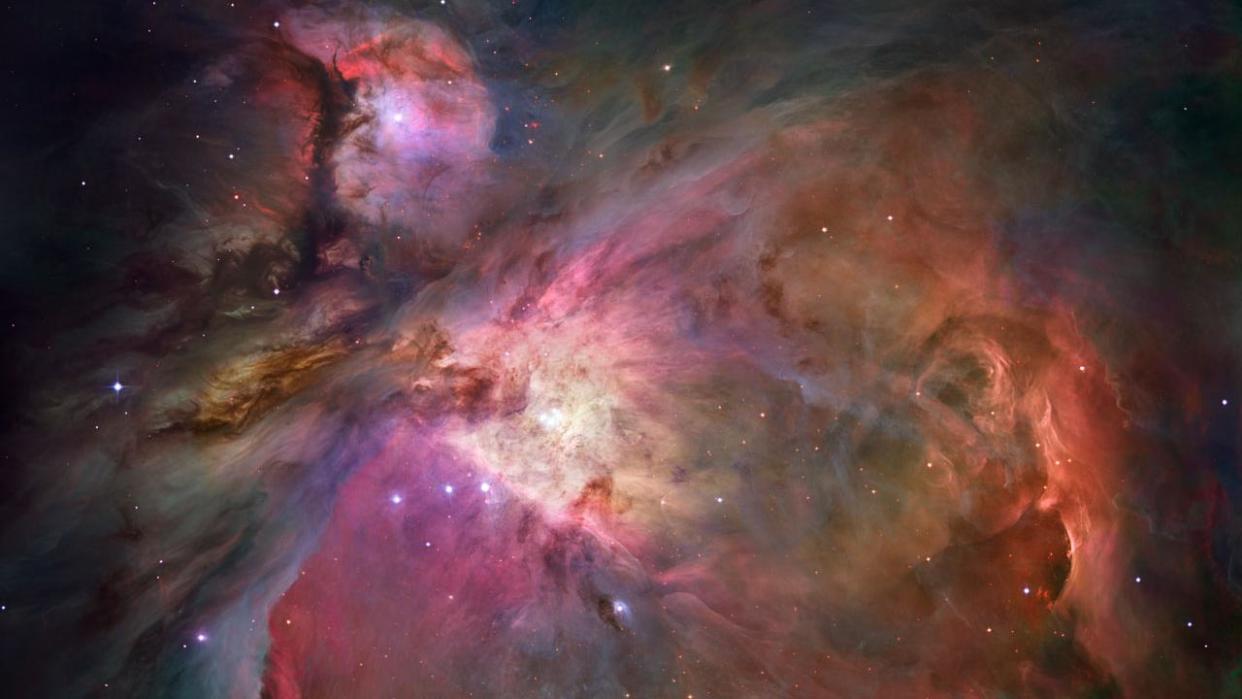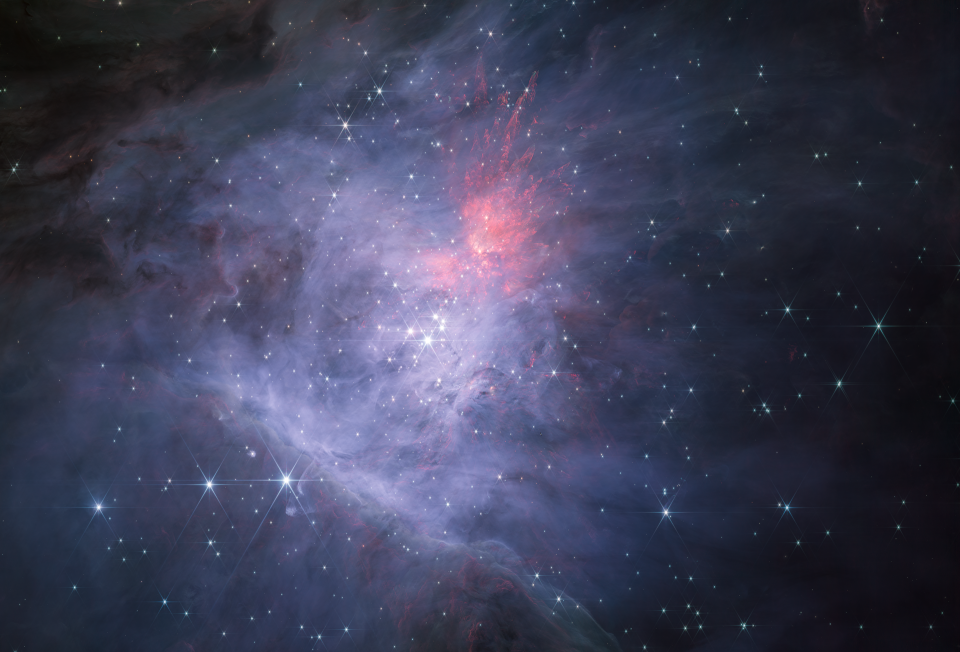Quasi-Planets Called JuMBOs Are Bopping Around in Space

The Webb NIRCam’s long-wavelength channel view of the ionized gas, dust, and molecular gas in the Orion Nebula.
A team of astronomers have detected over 500 planet-like objects in the inner Orion Nebula and the Trapezium Cluster that they believe could shake up the very definition of a planet.
The 4-light-year-wide Trapezium Cluster sits at the heart of the Orion Nebula, or Messier 42, about 1,400 light-years from Earth. The cluster is filled with young stars, which make their surrounding gas and dust glow with infrared light.
Read more
Youtuber Jailed On Piracy Charges Has 57-Vehicle Collection Auctioned Off By Feds
Armed Biker Probably Regrets Messing With This Philly Woman's Car

Webb’s short-wavelength channel showing the nebula and its many stars.
In the preprint, the team describes 540 planetary mass candidates, with the smallest masses clocking in at about 0.6 times the mass of Jupiter. According to The Guardian, analysis revealed steam and methane in the JuMBOs’ atmospheres. The researchers also found that 9% of those objects are in wide binaries, equivalent to 100 times the distance between Earth and the Sun or more. That finding is perplexing, because objects of JuMBOs’ masses typically orbit a star. In other words, the JuMBOs look decidedly planet-like but lack a key characteristic of planets.
The term “planet” has a winding history. As Ryan Mandelbaum reported for Gizmodo back in 2019:
A planet initially referred to anything that wandered across the sky, including the comets, the Sun, and the Moon. As scientists looked closer at the objects in the sky, they realized that Earth orbits the Sun, and that the other objects in the solar system could be further sorted. Planet earned a “you know one if you see one” kind of definition—Mercury, Venus, Earth, Jupiter, Saturn, Uranus, and Neptune are pretty obviously planets. The Moon wouldn’t be a planet, because it’s a moon. We’ve since assigned importance to these named planets and identify strongly with them.
So what are the JuMBOs? It’s still not clear whether the objects form like planets—by accreting the gas and dust from a protoplanetary disk following a star’s formation—or more like the stars themselves. The Trapezium Cluster’s stars are quite young; according to the STScI release, if our solar system were a middle-aged person, the cluster’s stars would be just three or four days old. It’s possible that objects like the JuMBOs are actually common in the universe, but Webb is the first observatory that has the ability to pick out the individual objects.
Webb will continue to scrutinize these free-floating planet-sized non-planets, alongside other small stars and brown dwarfs. More imaging of the candidate objects is planned for spring 2024. The more the telescope sees, the better astronomers might be able to draw the imaginary lines that distinguish one type of object from another.
More: What Astronomers Thought Pluto Looked Like Before They Saw It Up Close
More from Gizmodo
Fans Split After Final Fantasy VII Rebirth Reveals ‘Cait Sith’ Pronunciation
Are we allowed to laugh at The Morning Show's Jan. 6 episode yet?
Sophie Turner, Joe Jonas to Spend 4 Days Trying to Solve a Heap of Issues in Mediation
Five Former Ubisoft Execs Arrested By Police For Questioning About Sexual Misconduct Allegations
Sign up for Gizmodo's Newsletter. For the latest news, Facebook, Twitter and Instagram.

